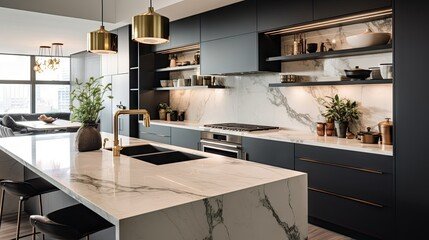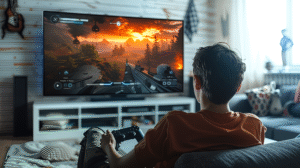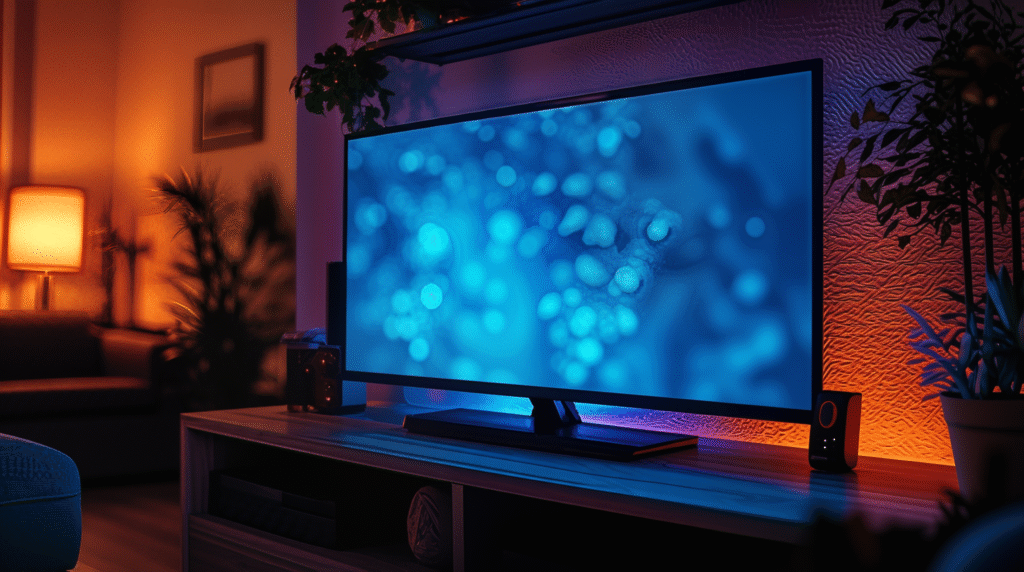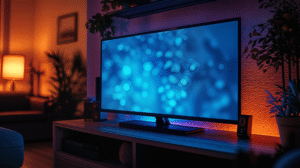A complete, easy-to-read guide to kitchen design. Learn layouts, materials, storage ideas, and expert tips to build your perfect kitchen space.
Understanding the Basics of Kitchen Design
Kitchen design is about more than picking colors. It means planning a space where you can cook, clean, and store with ease. A smart design makes your kitchen work better. From small changes to full makeovers, every choice counts. Good kitchen design saves time and adds value.
Why Kitchen Design Matters in Daily Life
Think about how often you use your kitchen. It’s where meals happen, where you gather, and where life flows. A poor layout can waste your time and energy. On the other hand, a great kitchen design makes cooking feel easy and even enjoyable.
Choosing the Right Layout for Your Kitchen
Your layout shapes your entire kitchen experience. There are common layouts: L-shape, U-shape, galley, and island. Each layout has strengths. Choose one based on your room size and how you move while cooking. Smart layouts make kitchen design efficient and practical.
The Work Triangle: Cook, Clean, Store
In kitchen design, the work triangle is the path between your stove, sink, and fridge. These should form a triangle for easy movement. This simple idea improves your flow in the kitchen. It’s all about saving steps and reducing effort while cooking.
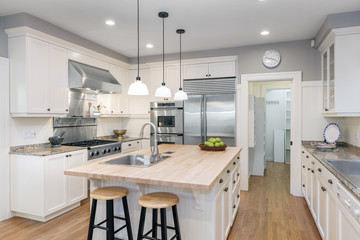
Cabinets That Make a Difference
Cabinets are key in kitchen design. They store your tools and keep things organized. Choose tall cabinets for more space. Use drawers for small items. Mix open shelves with closed doors. A smart cabinet layout avoids clutter and keeps your kitchen looking neat.
Countertops That Work for You
Counters give you space to chop, mix, and prep. Materials like granite, quartz, and laminate each have pros and cons. Choose one that fits your style and budget. In kitchen design, counters should be strong, easy to clean, and match your look.
Lighting That Brightens Your Kitchen
Light changes everything. Use task lighting under cabinets. Add ceiling lights for full room light. Try pendant lights over islands. Good kitchen design includes layers of light. That way, your kitchen looks good and feels safe to work in.
Floors That Last and Look Good
Floors take a lot of wear. Pick something durable. Tile, wood, or vinyl are popular. They’re easy to clean and come in many styles. When planning kitchen design, your flooring should match your daily use and the rest of your home.
Picking Appliances That Fit Your Space
Choose appliances based on size, features, and use. Go for energy-saving models. Think about built-ins to save space. In kitchen design, don’t let appliances crowd your room. Instead, make sure they fit your layout and style perfectly.
Backsplash Ideas That Add Style
A backsplash protects your wall and adds color. Use tile, glass, or even metal. It’s a chance to get creative. In kitchen design, backsplashes pull together your style and make cleaning easier. A bold backsplash can even become your kitchen’s centerpiece.
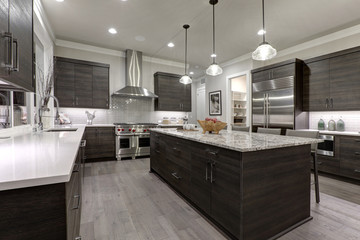
Smart Storage That Keeps Things Tidy
Smart kitchen design means smart storage. Use corner drawers, hanging racks, and pull-out shelves. Store heavy pans below and dishes above. Organize items by how often you use them. A well-designed kitchen saves space and reduces mess.
Adding an Island for Extra Space
If you have room, an island is great. It gives you more counter space, more storage, and a place to sit. In kitchen design, islands help bring everything together. You can cook, eat, and even work there.
Colors That Match Your Kitchen’s Mood
Colors shape your kitchen’s vibe. White feels clean. Blue feels calm. Red adds energy. Pick colors that match your taste. In kitchen design, colors can make a small room look big or a dark room look bright.
Choosing Materials That Last
Use strong materials that can handle spills, heat, and wear. Wood, tile, and stainless steel are good options. In kitchen design, the right materials last longer and look better. Don’t just go for looks—choose durability too.
Ventilation That Keeps Air Clean
Cooking makes smoke and smells. You need a vent hood or exhaust fan. Good kitchen design includes proper airflow. It keeps your space healthy and fresh. A window near your cooking area also helps.
Ergonomics: Design That Feels Good
Your kitchen should fit your body. Counters shouldn’t be too high or low. Cabinets should be easy to reach. In kitchen design, comfort matters. A well-designed kitchen means less bending, less reaching, and less strain.
Budgeting for Your Kitchen Project
Set your budget early. Break it into parts: cabinets, counters, appliances, and labor. Good kitchen design doesn’t have to cost a fortune. Focus on smart spending. Put money where it matters most—on function and daily use.

Mixing Function and Style
A beautiful kitchen is great, but it also has to work. Don’t choose a sink that looks good but doesn’t hold dishes. In kitchen design, balance is everything. Make sure each stylish choice still helps the kitchen function well.
Planning for the Future
Think long-term. Will you need more space in a few years? Will your needs change? Good kitchen design looks ahead. Choose layouts and features that can grow with you and adapt as your life changes.
Hiring Help vs. DIY
Some people do it themselves. Others hire pros. If your kitchen design is simple, you might handle it solo. But for major work, get help. Designers and contractors can save time and prevent mistakes. Decide based on your skills and budget.
Conclusion
Kitchen design is not just about choosing colors or where to put your fridge. It’s about making your everyday life smoother, more comfortable, and more enjoyable. A well-designed kitchen helps you cook faster, stay organized, and spend quality time with others. When each cabinet, counter, and light has a reason to be there, you feel the difference in how you use the space.
FAQs about Kitchen Design
1. What is kitchen design?
It’s how you plan your kitchen’s layout, storage, and style to make it work better and look great.
2. What’s the best kitchen layout?
It depends on your space. L-shape, U-shape, and island layouts are the most popular for different room sizes.
3. What is the work triangle?
It connects the stove, sink, and fridge to make cooking more efficient.
4. How can I make a small kitchen feel bigger?
Use light colors, open shelves, and smart storage to open up the space.
5. Should I hire a kitchen designer?
If the project is big or complex, yes. For small updates, you can do it yourself.


